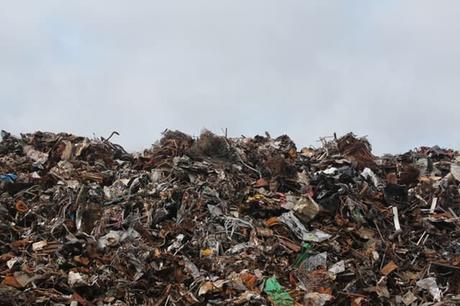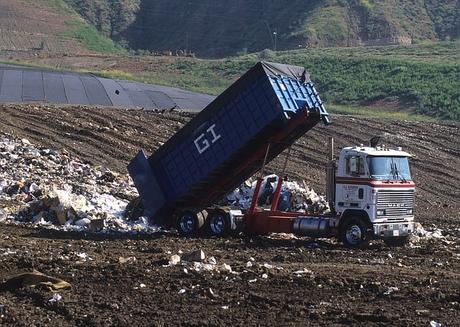What is Littering?
Littering implies careless and improper disposal of trash. It can be any rubbish carelessly thrown away such as candy wrappers, plastic wrappers, plastic bottles, chewed gum, cigarette butt and the list is endless. Littering can also be referred to as a thoughtless action done by an individual who is more of self-centred – doing only what is convenient for him/herself without regard for the people around him or the environment.
The worry here is that careless disposal of trash is an eyesore as well as a gateway to problems with regards to hygiene and the environment. The meaning of this therefore, is that, littering is a huge public concern as it contributes to several negative implications. Here are the major effects associated with littering on humans, the environment and even animals.

Effects of Littering on Humans
1. Clean up is cumbersome and eats on taxpayers money
Littering has a number of problems for humans. First, the littering creates a problem in logistics as someone has to clean the trash up after somebody carelessly drops it. Otherwise, the dirt sullies the region and serves as an eyesore. Also in dealing with the issue, municipalities often need to hire individuals to clean up the dirt. Municipalities achieves this by taxing citizens meaning that even those who do not litter still have to pay the price for those who do it.
2. Diseases
Litter carries germs that end up in various places and as a result, it festers and forms a breeding ground for bacteria. The effect of this is the exposure of the germs to the general public which can lead to outbreaks of diseases such as cholera and typhoid if the litter gets into water sources or carried by pets and birds into our homes. The resulting diseases can lead to deaths and poor general public health, devastating the entire city.
Litter can also cause injury or diseases by directly introducing pathogens to individuals. It happens in cases where the litter is glass or metal, such as rusty tins or contaminated glass/needles/blades. Rusty metals and dirty glass, for instance, can cut into skin causing infections such as tetanus.
3. Disruption of the water ways
Litter can lead to the disruption of water ways. When plastics are dumped inappropriately, they follow the path of water after heavy rains and eventually end up in drainage pipes and sewer channels. With time, the litter clogs up the sieves that lie along the pipes. The clogs then block the drainage pipes or water passages which cause the pipes to burst.
Once the pipes burst or drainages are clogged, it creates serious problems and most of the times it leads to free flow of raw sewage or flooding. Flooding and free flow of raw sewage are correlated with outbreak and spread of diseases namely typhoid, cholera, and malaria.
4. Pests and harmful animals
Littering creates conducive environments for pest such as deadly insects and rats to breed. The pests themselves tend to be vectors for diseases while in other cases, the pests attract other animals such as snakes that are even more harmful to human lives. An example is the king cobra which is an extremely venomous snake that feeds on the non-venomous rat snake which feeds on rats that are attracted to the filth of litter.
5. Compounded littering
It is also worth noting that litter breeds litter. Once litter begins to collect in a place, people tend to begin throwing their own litter at the same dump. Such a selfish behavior and disregard for hygiene leads to more litter collecting on the spot and as a result, it compounds the problem. With time, it makes the above mentioned problems worse and most of all, it makes the clean-up process much harder.
Effects of Littering on Animals
1. Poisoning
Littering introduces both noxious biodegradable and non-biodegradable waste into the environment. Animals that roam around the regions of such dumpsites tend to feed on the materials, such as food wrappers, and ingest them. The same can happen when the trash finds its way into water that the animals drink.
This can lead to poisoning of the animals by the chemicals within the wastes. Birds and pets are particularly at high risk if they eat from the trash. The result is poor health condition of the animals or even death due to poising or obstruction in their digestive systems.
2. Physical harm and trapping
Non-biodegradable trash traps animals as they can become ensnared and wounded as they struggle to get themselves loose. The trash such as beer can rings and wrongly discarded plastic items such as nets and ropes can entangle the limbs of the animals, sometimes even going around the animal’s necks and causing death because of asphyxiation.
If such trash finds way into water bodies, it can also lead to death via drowning or suffocation due to the animal’s inability to get away from water in the case of terrestrial animals or suffocation for aquatic animals as the plastics hinder the animal’s ability to move within the water.
3. Indigestible trash
Non-biodegradable trash has a bad effect on animals because it can cause problems if ingested. The animals become unable to digest the materials and they end up clogging the digestive tracts causing painful and slow deaths.
Aquatic animals are mostly affected as they feed on smaller microscopic foods such as krill which means they have to swallow large amounts of sea water which sometimes contains indigestible plastics or metals. Victims include whales and sea birds among other large aquatic fish and sea mammals.
4. Habitats for disease vectors
Just like humans, animals are susceptible to microbial attacks. Litter provides the disease vectors breeding grounds to hide and multiply. In the long-run, it leads to outburst in their numbers thereby spreading diseases to the animals. Vectors such as mosquitoes are known to transmit blood borne diseases and tend to breed in stagnant water found in dumpsites.

Effects of Littering on Environment
1. Uncomfortable and unpleasant
Trash is an eyesore on the environment. Littering disrupts the beautiful aesthetic of a region with waste. In other words, being in a littered area is very uncomfortable and unpleasant. Consequently, littering takes away business and even tourism because people tend not to want to be in an area or city that is dirty. Ultimately, businesses in such regions suffer. The nature of people’s disgust with litter also means that the environment loses its economic value.
2. Fire hazard
Littering can also poses a risk to the environment as it can facilitate fire outbreak. Plastics and paper waste tend to be very flammable and this means they can become easy to ignite after which it spreads the fire to the rest of the surrounding environment. Other items that are usually littered such as cigarette stubs and lighted matchsticks could also serve as the spark that would later ignite such fires.
Another starting point for the fires would be glass. Glass from bottles is usually shaped in a manner that focuses the ray of the sun. With suitable conditions and the sun strike glass in the right way, the glass could focus the sun’s rays into a single beam hot enough to ignite dried leaf or paper that would then start a fire.
3. Algal blooms
Algal blooms are sudden outbursts of large amounts of algae in an aquatic environment. Algal blooms come about when organic litter is dumped and finds its way to water ways and other aquatic environments. The organic trash then decomposes and releases nutrients that the algae use, leading to outbursts in their numbers.
The algae forms a carpet-like layer on the surface of the water which is hazardous to the marine life below it as it prevents oxygen from diffusing into the water. Some algae may also produce toxins that poison the aquatic animals leading to their deaths.
4. Chemical contamination
The environment is adversely affected by litter especially if it is chemical in nature. In terrestrial environments, the litter can gather for a long time leading to slow seepage of contaminants such as heavy metals into the soil. This is particularly the case when electrical components such as cell phone batteries are not properly disposed.
In aquatic environments, the problem could be even worse due to the sensitive nature of the environment. Pollutants from littering such as simple organic trash can disrupt the pH balance of the water, the nutrient content and even temperature causing large ripple effects on the plant and animal ecosystem beneath.

